Landscape Nature
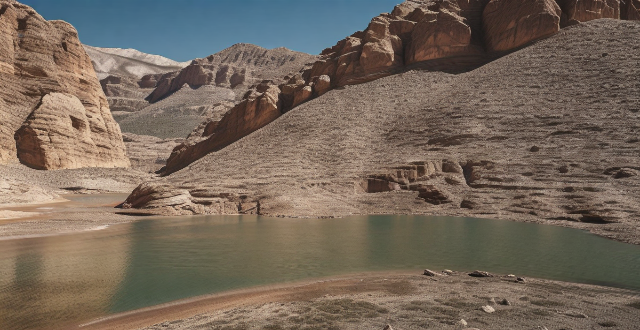
What are some underrated destinations for landscape photography ?
Landscape photography enthusiasts should consider exploring underrated destinations like Cappadocia, Zhangjiajie National Forest Park, Norway's fjords, the Atacama Desert, Plitvice Lakes National Park, the Great Ocean Road, and Patagonia for unique and breathtaking landscapes. These places offer surreal rock formations, mystical mountains, stunning fjords, otherworldly desert landscapes, cascading waterfalls, iconic coastal views, and majestic mountain ranges. Exploring these lesser-known destinations can lead to hidden gems and create stunning works of art that showcase the beauty of our planet.

What are the must-visit photography sites for wildlife and nature lovers ?
For photography enthusiasts who have a passion for capturing the beauty of nature and wildlife, there are several must-visit sites that offer breathtaking views and unique opportunities to capture stunning photographs. Here are some of the top destinations for nature and wildlife photography: 1\. Serengeti National Park, Tanzania - Diverse range of animals, spectacular landscapes, Great Migration. 2\. Galápagos Islands, Ecuador - Unique species, marine iguanas, giant tortoises. 3\. Yellowstone National Park, USA - Geothermal features, diverse wildlife, spectacular landscapes. 4\. Amazon Rainforest, South America - Biodiversity, dense vegetation, misty atmosphere. 5\. Maasai Mara National Reserve, Kenya - Large population of big cats, stunning landscapes, Great Rift Valley.

What are the best places to visit in Asia for nature lovers ?
Asia is a continent with diverse landscapes and natural wonders that offer an incredible experience for nature lovers. Here are some of the best places to visit in Asia for nature lovers: The Himalayas in Nepal is a paradise for trekkers and mountaineers. It is home to eight of the world's fourteen highest mountains, including Mount Everest. The region offers breathtaking views of snow-capped peaks, lush valleys, and cascading waterfalls. Some popular treks include the Annapurna Circuit, Langtang Valley Trek, and Everest Base Camp Trek. Yangshuo is a small town located in Guangxi Province, China. It is known for its stunning limestone karst formations, crystal-clear rivers, and picturesque countryside. Visitors can take a bamboo boat ride on the Li River, cycle through the countryside, or hike to the top of Moon Hill for panoramic views of the surrounding landscape. Bali is an island paradise in Indonesia that offers a unique blend of culture, beaches, and nature. It is home to several volcanic mountains, such as Mount Batur and Mount Agung, which offer challenging hikes with rewarding views. The island also has numerous rice terraces, waterfalls, and coral reefs that are perfect for snorkeling and diving. Jeju Island is a volcanic island off the southern coast of South Korea that is known for its beautiful beaches, hiking trails, and scenic landscapes. The island has several natural attractions, including Manjanggul Lava Tube, Cheonjiyeon Waterfall, and Hallasan Mountain, the highest peak in South Korea. Phong Nha-Ke Bang National Park is a UNESCO World Heritage Site located in central Vietnam. It is home to the largest cave in the world, Son Doong Cave, and several other impressive cave systems. The park also has lush forests, limestone mountains, and underground rivers that are perfect for kayaking and caving adventures. Zhangjiajie National Forest Park is located in Hunan Province, China. It is known for its towering sandstone pillars and steep cliffs that resemble those found in Avatar movie. The park also has several hiking trails, scenic viewpoints, and natural bridges that offer breathtaking views of the surrounding landscape. Khao Yai National Park is Thailand's third largest national park and a UNESCO World Heritage Site. It is home to diverse wildlife, including elephants, tigers, and gibbons. The park also has several hiking trails, waterfalls, and scenic viewpoints that offer stunning views of the surrounding landscape. Kinabalu Park is located on the island of Borneo in Malaysia. It is home to Mount Kinabalu, the highest peak in Southeast Asia. The park also has several hiking trails, including the challenging climb to the summit of Mount Kinabalu. Along the way, visitors can enjoy stunning views of the surrounding rainforest and wildlife.
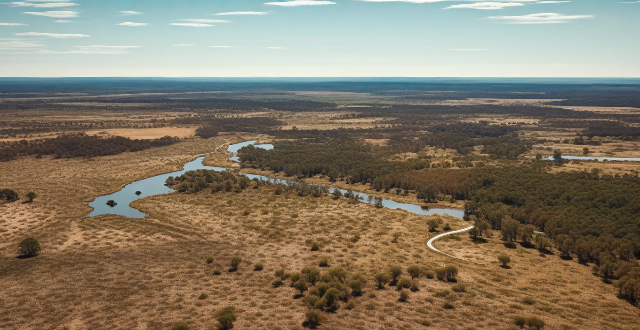
What are some tips for taking great landscape photos with a smartphone ?
Taking stunning landscape photos with a smartphone involves planning, mastering camera settings, careful composition, and mindful editing. Research your location, check the weather, use mapping apps to plan your shot. Understand your camera's capabilities, use HDR mode, and manual controls for better exposure and focus. Follow the rule of thirds, look for leading lines, include foreground interest, and simplify your composition. Pay attention to lighting, especially during golden hour, and be mindful of exposure to avoid blown-out highlights or blocked-up shadows. Edit your photos thoughtfully, adjusting color temperature, enhancing details, and applying filters sparingly. By following these tips, you can capture breathtaking landscape photos that showcase the beauty of nature through your smartphone's lens.

Does exercising in nature provide additional emotional benefits ?
**Nature Exercise Benefits** - **Therapeutic Effects**: Reduces stress, enhances mood, offers cognitive benefits. - **Physical Health Impact**: Encourages physical activity, reduces injury risk. - **Social Interaction**: Fosters community building and family bonding.

What are the best times of year to go on a nature and wildlife vacation ?
The text is a guide to choosing the best time for nature and wildlife vacations. It suggests considering weather conditions, animal migration patterns, crowd levels, and local events when planning a trip. Spring is considered the best time for such vacations because of mild weather and lush landscapes, while summer offers warm weather but potentially crowded destinations. Fall provides beautiful scenery and cooler temperatures for hiking and wildlife spotting, while winter can offer unique opportunities for certain types of wildlife viewing. The text also advises researching specific animal migration schedules if interested in seeing particular species. It recommends visiting during shoulder or off-season for a quieter experience and considering local events for a cultural element. Overall, the guide emphasizes careful consideration of various factors to plan an immersive and rewarding nature and wildlife vacation.

How can we prepare for the changing job landscape in the future ?
The future job landscape is constantly evolving, and it's important to stay ahead of the curve. Here are some ways to prepare for the changing job landscape: 1. **Continuous Learning**: Upskill or reskill to remain relevant in the job market, take advantage of online courses, and attend workshops and seminars related to your field. 2. **Adaptability**: Embrace change, be open to new ideas, and be flexible in your job search. 3. **Networking**: Build professional relationships, attend events, join professional organizations, and connect with people on platforms like LinkedIn. Conduct informational interviews with professionals in your field. 4. **Technology Proficiency**: Stay tech-savvy and familiarize yourself with popular tools and software used in your industry. Consider learning basic coding skills. 5. **Personal Branding**: Establish an online presence through platforms like LinkedIn, Twitter, and personal websites. Showcase your expertise by publishing articles and participating in discussions. By focusing on these areas, you can position yourself for success in the ever-evolving job market.

What are the best domestic travel destinations for nature lovers ?
Nature lovers are always in search of destinations that offer them the chance to explore, relax and connect with nature. Here are some of the best domestic travel destinations for nature lovers: 1. The Great Smoky Mountains National Park, Tennessee/North Carolina 2. Acadia National Park, Maine 3. Glacier National Park, Montana 4. Grand Canyon National Park, Arizona

What are the best destinations for a nature and wildlife tour ?
This text provides an overview of six top destinations for nature and wildlife tours worldwide. These include the Maasai Mara National Reserve in Kenya, the Galápagos Islands in Ecuador, the Amazon Rainforest spanning several South American countries, Kruger National Park in South Africa, Yellowstone National Park in the USA, and the Great Barrier Reef in Australia. Each destination is described with key features highlighting the unique wildlife viewing opportunities, cultural experiences, and natural wonders that can be found there. The text aims to provide a summary of these locations to help potential travelers choose their next adventure in nature and wildlife.

Can you suggest some off-the-beaten-path photography locations in Europe ?
Europe is full of beautiful and unique photography locations. While popular destinations like Paris, Rome, and Barcelona are definitely worth visiting, there are many off-the-beaten-path locations that offer stunning scenery and unique experiences for photographers. Some suggestions include the Faroe Islands in Denmark, the Dolomites in Italy, Plitvice Lakes National Park in Croatia, the Lofoten Islands in Norway, and the Scottish Highlands in Scotland. These locations offer breathtaking landscapes, including rugged cliffs, picturesque villages, dramatic waterfalls, alpine meadows, glacial lakes, traditional Alpine buildings, interconnected lakes and waterfalls, coastal landscapes, sandy beaches, fishing villages, mountain landscapes, rolling hills, deep valleys, and famous lakes.
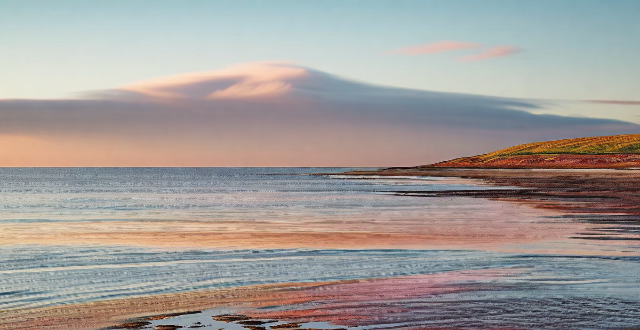
How do I take stunning landscape photos using my iPhone ?
To take stunning landscape photos using your iPhone, focusTo take stunning landscape photos using your iPhone, focus the rule of thirds and play with perspectives, and mind details such as color palette and moment timing. Post-process with editing apps and accessories like a tripod or external lenses for improved results.
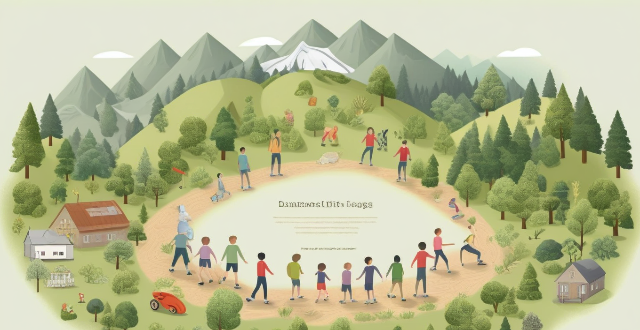
How do outdoor sports like hiking or mountaineering foster a deeper connection with nature and improve mental health ?
The text discusses the connection between outdoor sports, particularly hiking and mountaineering, and mental health. It highlights how these activities offer physical benefits such as fresh air and sunlight, which boost mood and energy levels, and the release of endorphins through physical activity. Mentally, being in nature encourages mindfulness and presence, reducing stress and anxiety, while the grandeur of nature can provide perspective on everyday worries. Physical challenges build stamina and resilience, with a sense of accomplishment from completing trails or reaching summits. Mental challenges include problem-solving and building resilience. Social interaction through shared experiences and forming supportive communities is also beneficial. Personal growth aspects include self-reliance and adaptability. The mind-body connection is emphasized through the meditative effects of nature and sensory engagement, as well as the physical well-being derived from cardiovascular health and muscle strength. Overall, outdoor sports like hiking or mountaineering provide numerous opportunities for improving mental health through various means.
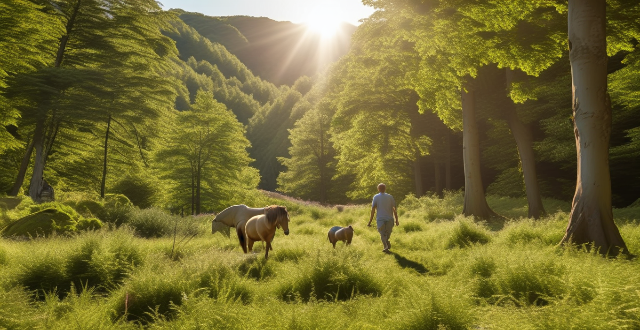
What are the psychological benefits of connecting with nature, and how can they mitigate the effects of climate change ?
Connecting with nature has numerous psychological benefits that can significantly improve our mental and emotional well-being. These benefits include reducing stress and anxiety, boosting mood and happiness, improving concentration and cognitive function, enhancing creativity, promoting emotional resilience, and fostering mindfulness and present-moment awareness. Additionally, the psychological benefits of connecting with nature play a crucial role in mitigating the effects of climate change by increasing environmental awareness, promoting sustainable behaviors, inspiring collective action, and encouraging policy changes. By recognizing the importance of nature for our mental health and taking action to protect it, we can work towards a healthier planet and a happier population.
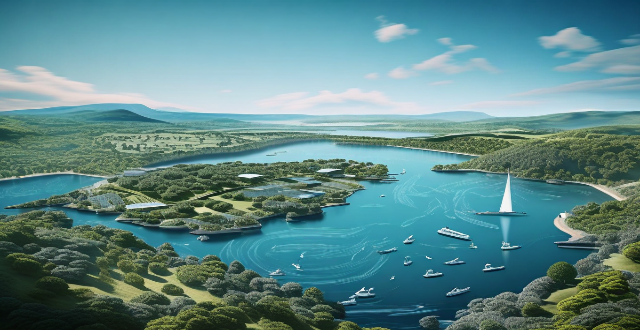
How can environmental ethics help address climate change ?
Environmental ethics, a branch of philosophy, examines the moral relationship between humans and nature. It helps in addressing climate change by recognizing nature's intrinsic value, promoting stewardship and sustainability, encouraging intergenerational equity, and fostering global cooperation.
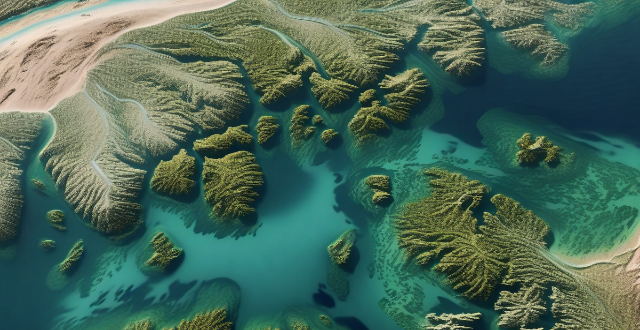
What are the impacts of global warming on travel destinations ?
Global warming is causing significant changes to travel destinations worldwide, including rising sea levels that threaten coastal areas and alter natural landscapes. Altered climates disrupt seasonal patterns and increase extreme weather events. Environmental degradation, such as desertification and drought, affects agricultural productivity and wildfire risk. Melting ice impacts glacier-based activities and fjord landscapes. Shifts in wildlife habitats due to changing biodiversity and coral reef bleaching also pose challenges. The tourism industry must adapt to these changes and promote efforts to mitigate global warming's effects.

How can we ensure job security in an ever-changing employment landscape ?
In the ever-changing employment landscape, job security is a concern for many professionals. To maintain job security, strategies such as continuous learning, adaptability, networking, performance orientation, personal branding, career planning, financial planning, and mental health management are recommended. These approaches can help professionals stay relevant, demonstrate value, build a positive image, set clear goals, save for emergencies, manage stress, and seek support when needed. By implementing these strategies, individuals can increase their resilience and adaptability, enhancing their job security.

How do sports tourism and mega-events shape the urban landscape and infrastructure ?
Sports tourism and mega-events significantly impact the urban landscape and infrastructure, driving developments in sports facilities, public spaces, urban renewal projects, transportation systems, accommodation facilities, and utility services. These events also raise environmental concerns, prompting host cities to implement sustainable practices. Balancing these developments with environmental considerations is crucial for creating lasting legacies that benefit both current residents and future generations.
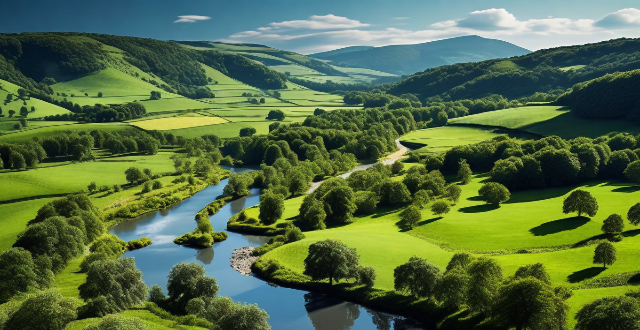
What are the ethical implications of climate change and how can we address them ?
Climate change has significant ethical implications affecting nature, justice, and future generations. The discussion explores these dimensions and suggests strategies to address them, including respecting nature, ensuring intergenerational equity, promoting justice in climate action, and implementing policy initiatives, technological innovations, and social change to mitigate climate impacts.

How can education promote environmental ethics ?
Education is crucial for fostering environmental ethics among students by integrating interdisciplinary approaches, real-world examples, and skill development. Experiential learning through field trips, hands-on projects, and community engagement helps instill a deeper connection with nature. Teaching sustainable practices like reducing waste and conserving energy encourages responsible resource management. Encouraging critical thinking through debates and research assignments enhances understanding of complex environmental issues. Cultivating empathy and responsibility involves promoting nature connectivity and global perspectives. Assessment and reinforcement strategies such as project-based assessments and recognition programs help evaluate and motivate students' commitment to environmental stewardship.

What challenges do developing countries face when trying to compete in a globalized sports landscape ?
**话题总结:** 本文讨论了发展中国家在全球体育领域中面临的挑战,这些挑战主要包括经济、基础设施、政治和社会因素。 1. **经济因素**:包括政府支持不足和对私人赞助的依赖,以及高质量设备和技术获取困难。 2. **基础设施因素**:涉及体育设施和训练中心的缺乏及其维护不足,以及交通基础设施的不发达。 3. **政治因素**:政治不稳定和腐败可能导致资源分配不当和体育组织的不公行为。 4. **社会因素**:教育与体育之间的选择、性别障碍、文化差异和缺乏榜样都可能限制人才的发展。 文章还提出了克服这些挑战的方法,如增加投资、改善基础设施、促进透明度和良好治理以及提高公众意识和改变社会规范。通过积极应对这些挑战,发展中国家可以为他们的运动员在全球舞台上的成功铺平道路,并激励未来的一代追随他们的脚步。

What are the benefits of guided vs self-guided nature and wildlife tours ?
The article discusses the advantages and disadvantages of guided versus self-guided nature and wildlife tours. Guided tours offer professional guidance, organized experiences, safety and support, and local connections but can be more expensive and less flexible in terms of itinerary and schedule. Self-guided tours, on the other hand, allow for customized itineraries, independence, cost efficiency, and deeper engagement with the environment, but require more planning and may lack the safety net provided by a guide or group. The choice between these two types of tours depends on personal preferences, skill level, goals, and budget.
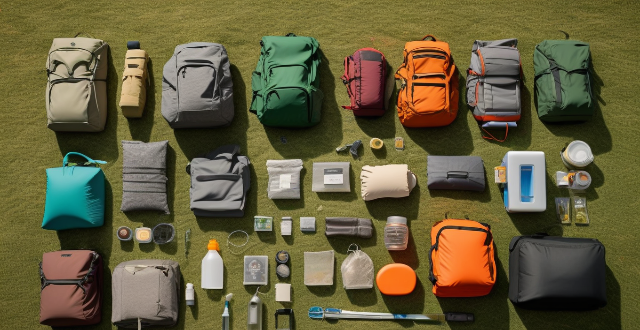
What should I pack for a nature and wildlife adventure ?
This packing list outlines essential and optional items for a nature and wildlife adventure. Essential items include appropriate clothing, equipment such as a backpack and tent, food and water supplies, safety and first aid provisions, and miscellaneous items like insect repellent and sunscreen. Optional items may include entertainment, personal items, and extra gear such as trekking poles and dry bags. It is important to pack according to the specific activities planned and the climate of the destination, and to check the weather forecast before departure to adjust the packing list accordingly.

Can you recommend a scenic bike path for beginners ?
Cycling is a great way to stay active while exploring nature. Here are some recommendations for scenic bike paths suitable for beginners: 1. Flat and Paved Trails: The Great Allegheny Passage in Pennsylvania offers a smooth surface with lush forests and rolling hills; Lake Tahoe Bike Path in California & Nevada circles around Lake Tahoe with breathtaking views; The Rail Trail in Victoria, Australia follows an old railway line with diverse scenery. 2. Natural and Dirt Trails: Captain Lawrence Gilroy Nature Trail in Ontario, Canada takes you through a beautiful forest setting; Maah Daah Hey Trail in North Dakota offers a mix of terrains with stunning views of the Badlands; Chautauqua Park Trail in Boulder, Colorado winds through the foothills of the Rocky Mountains with both paved and natural surfaces. Tips for beginner cyclists include starting slow, choosing the right gear, staying hydrated and fueled, being aware of surroundings, and having fun.
![What are the best photography locations in [insert country/region] ?](/imgs/2f8b31ee-f62a-46e3-8828-37a4af062f9b.png)
What are the best photography locations in [insert country/region] ?
The text provides a comprehensive guide to the best photography locations in a specified country or region. It is divided into three main categories: Natural Wonders, Cultural Landmarks, and Scenic Viewpoints. Within each category, specific locations are suggested based on their unique features and photographic potential. Under Natural Wonders, Mountain Ranges, Waterfalls, and Coastal Landscapes are discussed with specific examples given for each type of landscape. Cultural Landmarks include Historic Buildings and Museums and Art Galleries, highlighting architectural beauty and artistic expression respectively. Lastly, Scenic Viewpoints cover Lookout Points and Parks and Gardens, showcasing panoramic views and natural beauty. The guide emphasizes the variety of photographic opportunities available in the specified location, encouraging photographers of all styles and preferences to explore and capture the essence of the place through their lenses.
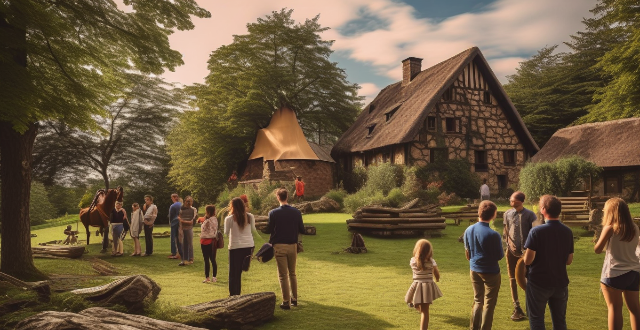
What are some local experience activities that allow me to learn about the culture ?
The text discusses various ways to explore and appreciate local cultures through immersive experiences and activities. These include culinary adventures, art and craft workshops, music and dance performances, festivals and celebrations, historical tours and museum visits, nature and landscape exploration, and community interaction. Each of these activities offers unique insights into the traditions, beliefs, and daily life of local communities, allowing travelers to gain a deeper understanding and appreciation of the cultures they encounter.
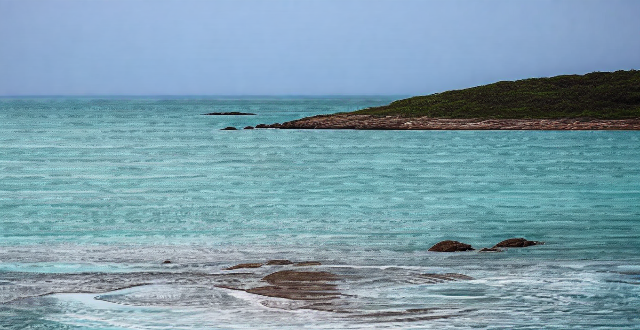
What are some of the most unique wildlife experiences I can have on a nature tour ?
The text provides a list of top unique wildlife experiences on a nature tour, including Great Barrier Reef snorkeling, polar bear safari in Manitoba, orangutan trekking in Borneo, African safari in Serengeti National Park, kayaking with killer whales in Norway, gorilla trekking in Bwindi Impenetrable Forest, humpback whale watching in Tonga, penguin colony visit in Antarctica, sloth sanctuary visit in Costa Rica, and nighttime wildlife encounters in Kruger National Park.

What are the educational requirements for professionals interested in ecological design ?
Ecological design requires professionals to have a combination of skills and knowledge in various fields. A bachelor's degree is typically required for entry-level positions, with majors such as environmental science, architecture, landscape architecture, and urban planning. Many professionals also pursue a master's degree or certifications to gain specialized knowledge and advance their careers. Certifications include LEED Accredited Professional, Living Building Challenge Certified Professional, American Society of Landscape Architects Certified Professional, and National Council of Interior Design Qualifications Certified Professional Interior Designer.

How does the perception of climate-related risks vary across different cultures and societies ?
The perception of climate-related risks varies across different cultures and societies due to factors like historical experiences, cultural values, socioeconomic conditions, education levels, access to information, political landscapes, and religious beliefs. Understanding these variations is crucial for developing effective strategies to address climate change globally.